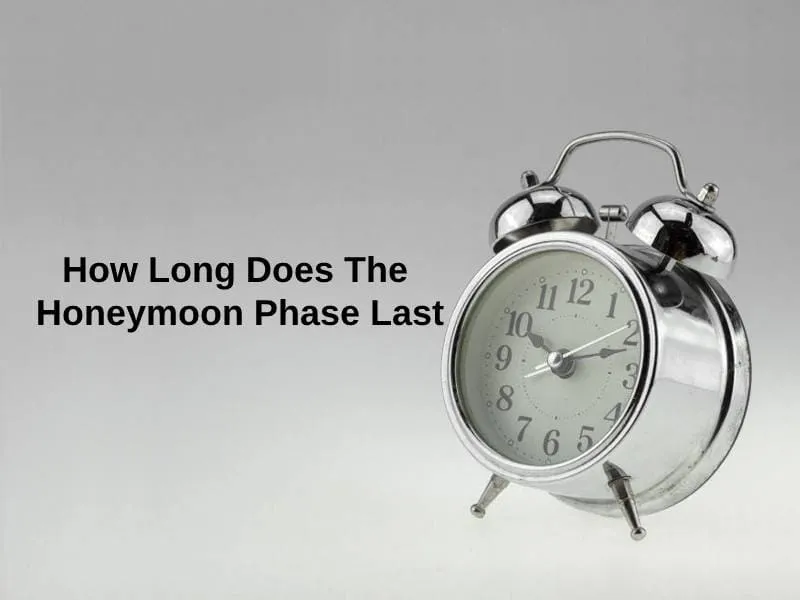What is the Honeymoon Phase?
The honeymoon phase, that initial period of a relationship filled with intense passion, excitement, and idealization, is a universally recognized experience. It’s that magical time when everything about your new partner seems perfect, and the world feels brighter. This period is characterized by a surge of feel-good chemicals in the brain, leading to a sense of euphoria and a strong desire to be with your loved one. It’s a time of discovery, where every shared experience feels new and exciting, and the future stretches out before you, full of possibilities. The honeymoon phase sets the stage for the relationship, but understanding its nature is crucial for navigating the challenges that come later.
Signs You’re in the Honeymoon Phase
Recognizing the signs of the honeymoon phase can help you understand where you are in your relationship. The hallmarks include a constant desire to be with your partner, an inability to stop thinking about them, and a tendency to focus on their positive qualities while overlooking any flaws. Communication flows easily, conversations are filled with laughter and shared interests, and physical intimacy is frequent and passionate. You might find yourselves making grand plans for the future, feeling as though you’ve found your soulmate. This period is often marked by a sense of giddiness and excitement, making everyday activities feel extraordinary.
Intense Feelings of Passion

Passion is at its peak during the honeymoon phase. The physical and emotional attraction is all-consuming, leading to a heightened sense of intimacy and a strong desire for physical closeness. This intense passion fuels the relationship, making it feel exhilarating and exciting. The desire to be with your partner, to touch, and to be close to them is nearly constant. It’s a powerful force that shapes your interactions and reinforces the bond between you.
Idealization of Your Partner
During the honeymoon phase, it’s common to idealize your partner. You tend to focus on their positive traits, overlooking any imperfections or flaws. This idealization creates a sense of perfection, making your partner seem flawless and the relationship effortless. You may place them on a pedestal, seeing them as the embodiment of your ideal partner. While this can be a lovely experience, it’s important to remember that everyone has imperfections. Recognizing this is important as the relationship evolves.
Increased Dopamine Levels
Dopamine, the ‘feel-good’ neurotransmitter, plays a significant role in the honeymoon phase. Its levels surge, creating feelings of pleasure, excitement, and motivation. This surge is what makes being with your partner feel so wonderful and reinforces the behaviors that keep you together, such as spending time together and engaging in physical intimacy. Dopamine is linked to the reward system in the brain, making you crave more of the experiences that trigger its release. This is why you want to be with your partner constantly and why the relationship feels so addictive.
Why the Honeymoon Phase Ends

The honeymoon phase, while enjoyable, is not meant to last forever. Several factors contribute to its eventual end. As you spend more time together, the intensity naturally decreases. Daily life, responsibilities, and inevitable disagreements begin to surface, shifting the dynamics of the relationship. Understanding why the honeymoon phase fades is essential for managing expectations and building a lasting, healthy relationship. The transition from the honeymoon phase to a more realistic view of your relationship does not mean the end of love, but rather a new chapter of deeper connection.
The Role of Habituation
Habituation, or getting used to something, is a primary reason the honeymoon phase fades. The initial excitement and novelty wear off as you become more familiar with your partner. The brain gets accustomed to the constant stimulation of a new relationship, and the flood of dopamine gradually reduces. The once-intense feelings of passion and excitement become less frequent. This natural process doesn’t mean that love is gone, but rather that the relationship has evolved into a more stable and comfortable phase.
Unrealistic Expectations
During the honeymoon phase, you might develop unrealistic expectations about the relationship. The constant positivity and idealization create a picture of perfection that’s impossible to sustain. You might believe that conflict will never arise or that your partner will always be the perfect version of themselves. When reality inevitably sets in, and challenges surface, it can be disappointing. Recognizing that differences and disagreements are normal and unavoidable is crucial for long-term relationship health.
Changes in Relationship Dynamics

Over time, the dynamics of your relationship naturally shift. The initial focus on getting to know each other evolves as you build a shared history and routine. As you become more comfortable, you may spend more time apart pursuing individual interests. Conversations may shift from the excitement of discovery to the practicality of daily life. This evolution doesn’t signal the end of the relationship but rather its maturation. Understanding that these changes are normal can help you embrace a deeper level of connection.
Factors Influencing the Honeymoon Phase’s Duration
The duration of the honeymoon phase can vary significantly from one relationship to another. Several factors influence how long this phase lasts, including individual personality traits, relationship history, and communication styles. Understanding these factors can help you set realistic expectations and navigate the transition from the honeymoon phase with greater ease. Different couples experience and respond to the end of the honeymoon phase in various ways.
Personality Traits
Individual personality traits can affect the honeymoon phase. For instance, people with a more romantic disposition might experience a longer honeymoon phase. Those who are more cautious or realistic may transition to a more stable phase sooner. Someone with a high need for novelty might have a shorter honeymoon phase, while someone who values consistency and security might have a longer one. Understanding your own personality and your partner’s can help you adapt to the natural evolution of the relationship.
Relationship History

Previous relationship experiences play a significant role. If you or your partner have had successful relationships in the past, you might approach the new relationship with a more balanced perspective, potentially shortening the honeymoon phase. Conversely, if there’s baggage from past relationships, it could impact how you navigate this phase. Previous experiences shape how you view relationships, how you set expectations, and how you communicate and address conflict. These factors can influence the honeymoon phase’s duration.
Communication Styles
Communication is key in any relationship. Couples who communicate openly, honestly, and effectively tend to have a smoother transition out of the honeymoon phase. Being able to discuss expectations, needs, and concerns early on creates a strong foundation for the relationship. Conversely, poor communication can prolong the honeymoon phase, as issues are not addressed, or can make the transition more difficult when reality sets in. Good communication enables you to navigate challenges, resolve conflicts, and build a lasting bond.
Relationship Length & Honeymoon Phase
The duration of the honeymoon phase also often correlates with the overall length of the relationship. Couples who start dating, usually experience a more intense but shorter period of idealization, typically lasting a few months. Long-term relationships see an extended honeymoon phase, followed by a period of increased connection and deeper understanding. The length of the honeymoon phase does not necessarily determine the success of the relationship, but rather the type of connection the couple has.
Early Stages of Dating

In the early stages of dating, the honeymoon phase tends to be shorter, often lasting from a few weeks to a few months. This is because there is still much to discover about each other. The focus is on getting to know each other and building a strong foundation. During this period, the initial attraction and excitement are at their peak. This phase sets the tone for the relationship, and the experiences here are crucial in determining the next stage of the relationship.
Long-Term Relationships
In long-term relationships, the honeymoon phase can extend for a year or longer, although the intensity gradually decreases. These couples often build a strong foundation of trust and shared experiences, fostering a deeper sense of connection. The focus shifts from getting to know each other to building a life together, and the relationship matures over time. The love evolves, but that doesn’t diminish the bond. In fact, it often deepens and becomes more meaningful.
Tips for Extending the Honeymoon Phase
While the honeymoon phase will eventually fade, you can take steps to maintain the spark and prevent the relationship from becoming stale. The key is to consciously nurture the connection and introduce novelty and excitement into your relationship. These strategies are a great way to maintain passion and deepen your bond, even after the initial euphoria has waned. By implementing them, you can create a lasting relationship.
Maintaining Novelty

Introduce novelty into your relationship by trying new activities together. This could include taking a class, traveling to new places, or simply trying a new restaurant. Novelty triggers the brain’s reward system, mimicking the excitement of the early days. Schedule regular date nights to prioritize your time together and create new memories. By experiencing new things as a couple, you keep the relationship exciting and avoid the monotony that can erode the initial passion.
Effective Communication
Open and honest communication is crucial for any lasting relationship. Make it a habit to talk about your feelings, needs, and expectations. Regularly check in with your partner to ensure you’re both on the same page. Resolve conflicts in a healthy and constructive manner. Actively listening to your partner, validating their feelings, and expressing your own needs clearly helps strengthen your connection. Effective communication fosters trust and empathy, allowing the relationship to grow and thrive.
Shared Experiences
Create shared experiences to deepen your bond. Participate in activities together that you both enjoy. These experiences can be anything from traveling and trying new hobbies to simply spending time together doing everyday things. Sharing experiences creates lasting memories and strengthens your connection. When you experience life together, you build a shared history and strengthen your emotional bond.
The honeymoon phase of a relationship, with its intense passion and excitement, is a beautiful and essential part of the relationship. It is a time of discovery, idealization, and intense feelings. However, it’s important to understand that this phase is temporary. By recognizing the signs, understanding the factors that influence its duration, and implementing strategies to maintain the spark, you can navigate the transition and build a lasting relationship that is built on a foundation of trust, communication, and shared experiences.
